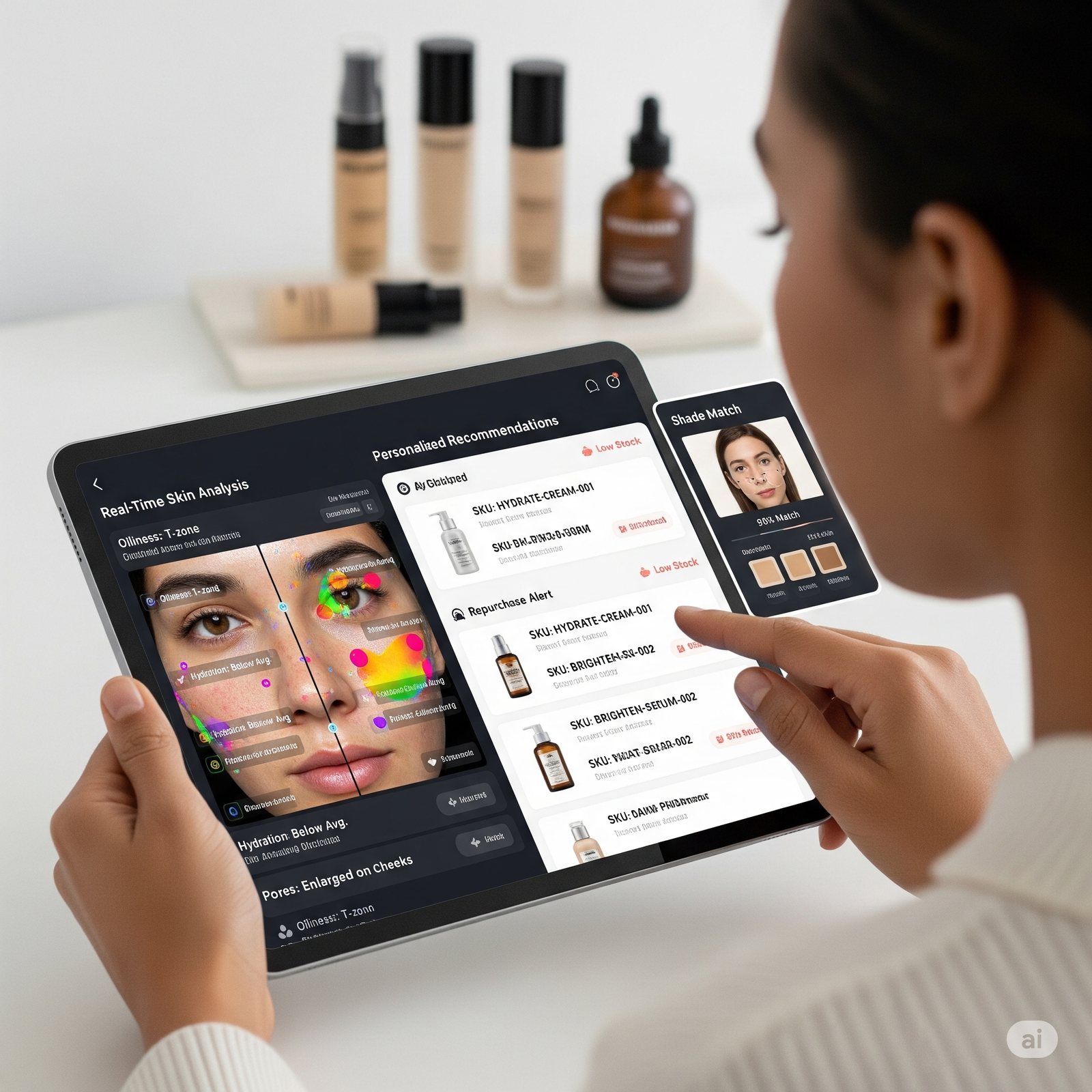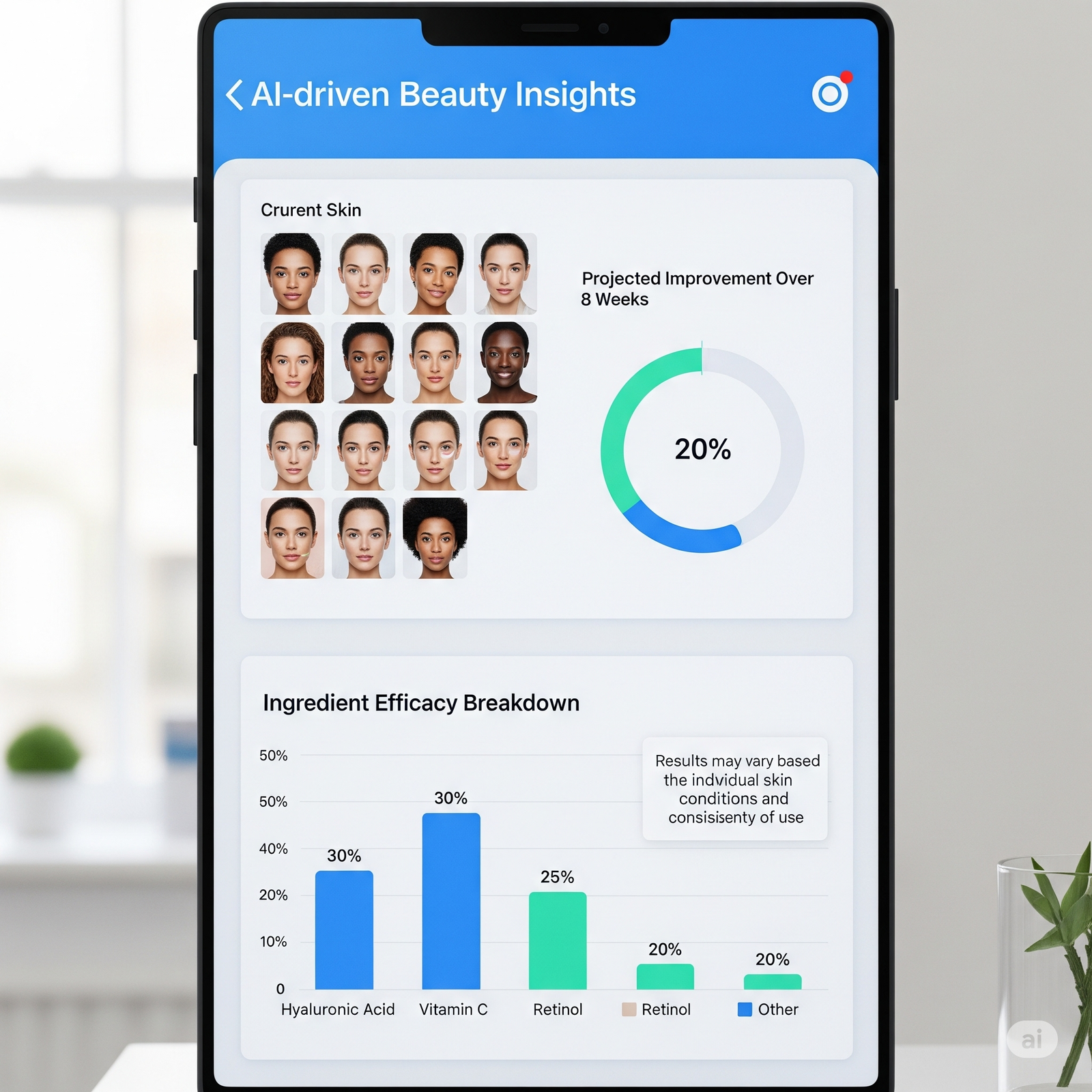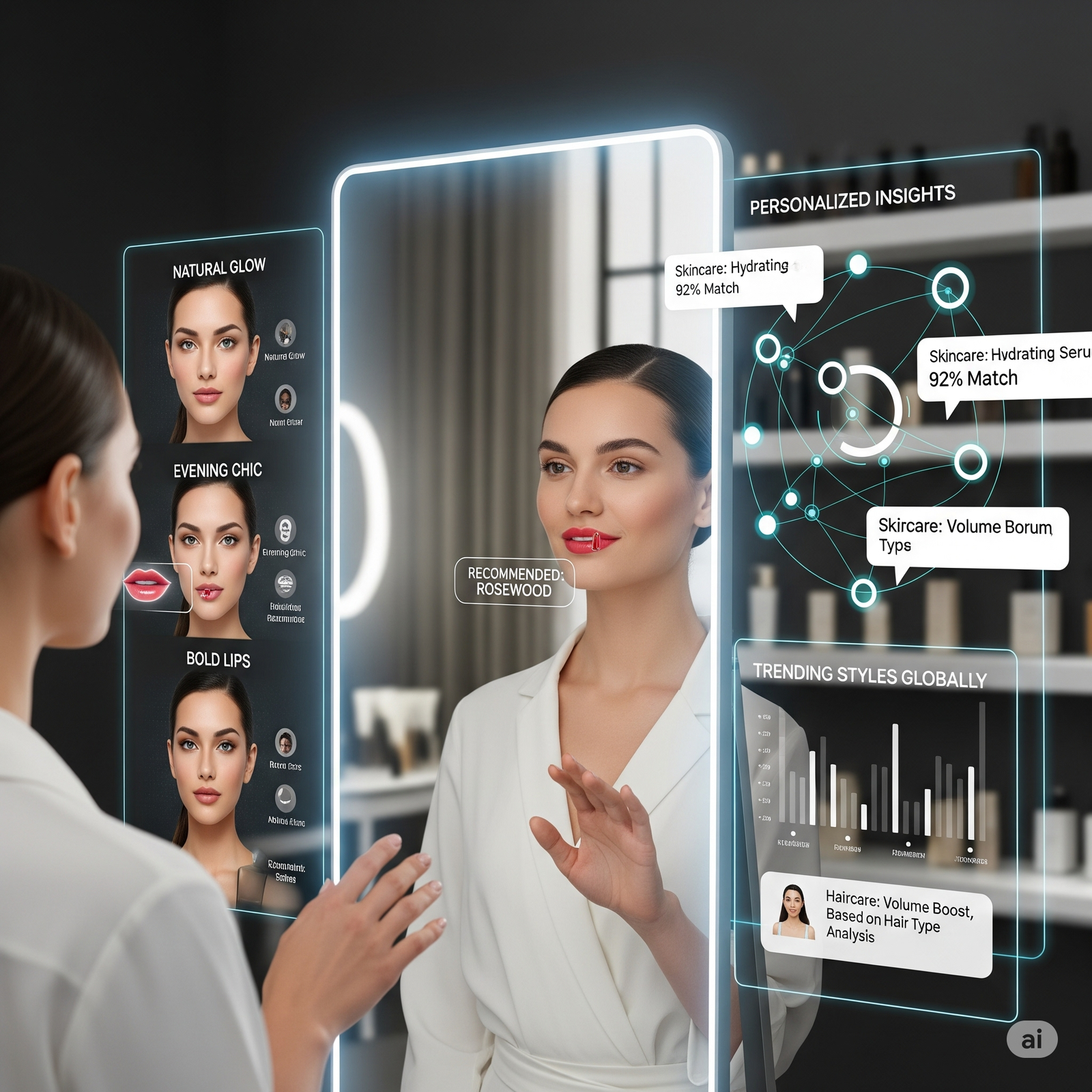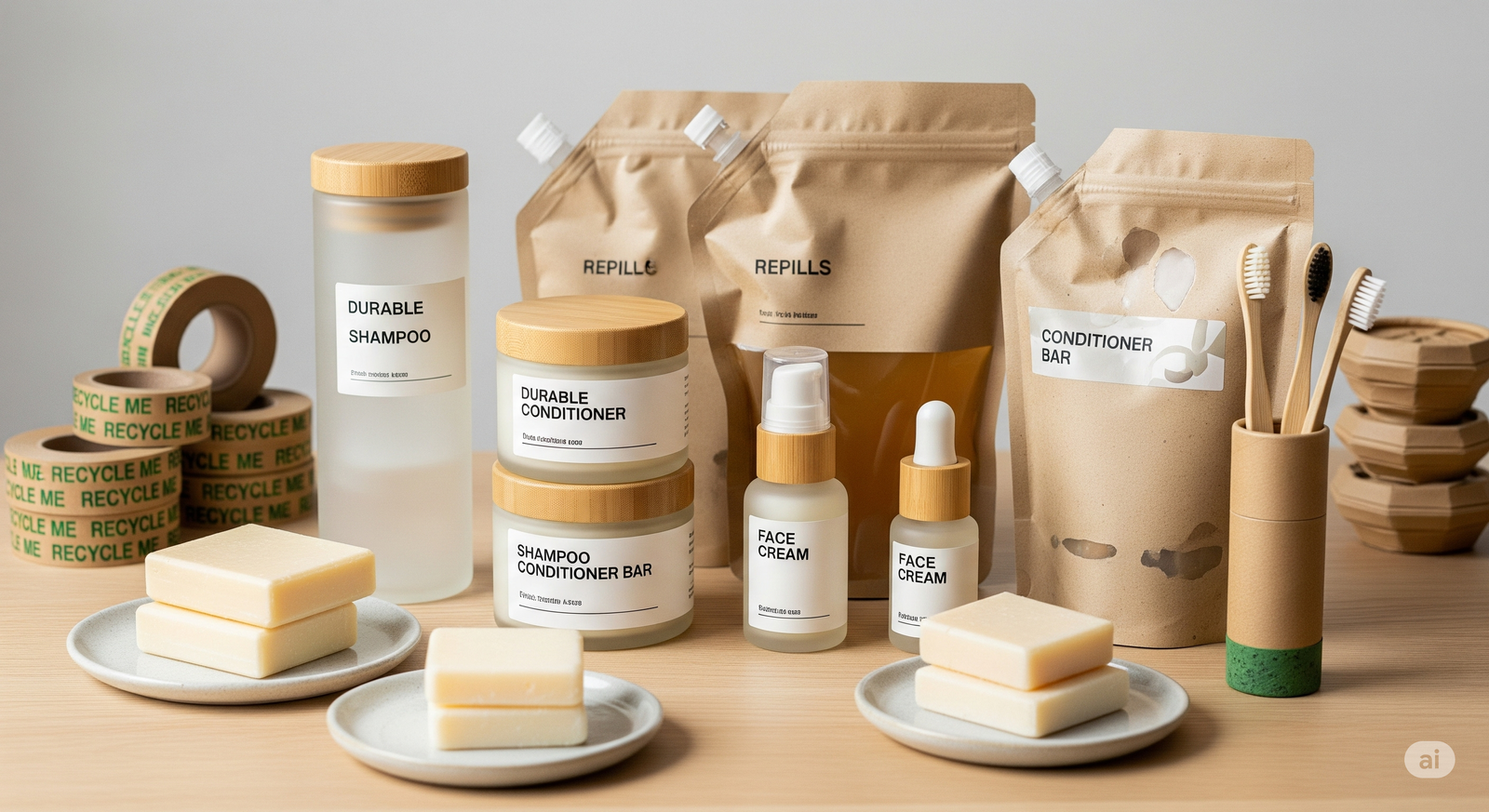Building Brand Loyalty with AI-Driven Customer Insights
Discover how beauty brands use AI customer insights and data-driven marketing to refine products, build loyalty, and personalize experiences with Admigos analytics.
27 Jul'25
By Niharika Paswan


Building Brand Loyalty with AI-Driven Customer Insights
In 2025, customer acquisition is no longer the biggest hurdle for beauty brands. It’s retention. The same algorithms that help new products go viral also drive faster consumer fatigue. And in a saturated space where dupes launch weekly, loyalty is fragile unless you truly know who you're selling to.
That’s where AI customer insights step in. Not just as a backend upgrade, but as a frontline differentiator. The brands winning today are those using data not to chase trends, but to personalize for the individual: her tone, her texture, her purchase patterns, her skincare goals. Data-driven beauty marketing is shifting from generic personas to predictive personalization. And it’s turning passive buyers into long-term advocates.
What AI Customer Insights Actually Mean in Practice

The phrase sounds like a buzzword, but AI customer insights are surprisingly tangible when broken down. In beauty, this translates into:
- Understanding what SKUs a customer is likely to repurchase
- Anticipating when she’s due for replenishment based on usage cycles
- Suggesting the right shade range based on previous swatches or diagnostic scans
- Spotting patterns like serum fatigue or ingredient intolerance based on returns or reviews
By interpreting large volumes of structured and unstructured data from e-commerce behavior to product feedback to CRM interactions, AI reveals a customer blueprint that goes beyond demographics.
This isn’t just good for personalization. It’s powerful for forecasting. When a brand knows that 18-24 year olds in coastal regions start buying more gel-based moisturizers in May, it can optimize campaign timing, influencer partnerships, and even inventory. Firework explores how beauty brands are harnessing AI to enhance personalization, improve shopping experiences, and build deeper customer connections.
Experience: What the Top Brands Are Already Doing
Some of the world’s biggest beauty players have gone all in on this approach. Estee Lauder’s acquisition of Deciem wasn’t just about product, it was about tapping into a high-loyalty, data-rich audience. L’Oreal, through acquisitions and partnerships, has scaled tech like AI shade match, skin analyzers, and virtual try-ons to feed personalization engines.
But the more interesting moves are happening in mid-sized and digital-native brands.
- ILIA Beauty uses zero-party data collected through skin quizzes to tailor follow-up product suggestions that actually convert.
- Glow Recipe built a diagnostic tool into its site that maps skin goals to ingredients, boosting average order values.
- Typology Paris relies heavily on skin typology and historical behavior to present minimalist, highly targeted bundles.
- Each of these moves shares one common thread: personalization grounded in data, not guesswork.
The Logic Behind Loyalty: From Transaction to Relationship
In beauty, emotional connection and product performance go hand in hand. But loyalty only grows when both are consistent. AI makes this possible by building feedback loops that learn and evolve. For example, if a customer buys a retinol serum and later rates it 2 stars for irritation, a smart system will ensure that gentler options are suggested next time, not just more retinol. These moments create trust. And trust creates retention.
Here’s what an AI-optimized loyalty model enables:
- Timely reminders that respect product usage cycles
- Ingredient-level recommendations based on skin needs
- Shade-range personalization that factors in undertone, finish, and climate
- Bundles curated from actual usage history, not static upsell templates
- Early-access rewards that feel earned, not mass-mailed
It’s not about overwhelming the customer with options. It’s about showing him or her that you were paying attention. Revieve highlights real-world case studies showing how beauty brands and retailers are using AI-driven data to elevate customer engagement and drive measurable sales growth.
Expertise: What Makes Beauty Brand Personalization Work

True AI-powered personalization in beauty requires a mix of four pillars:
- Clean Data Collection This includes product reviews, skin diagnostics, email clicks, reorder frequency, and more. Tools like post-purchase surveys, virtual consultations, or skincare quizzes provide direct input from the consumer herself.
- Cross-Platform Visibility Your AI only works as well as your integrations. Data must flow between your DTC site, your CRM, your SMS or email tools, and your retail partnerships (especially if you're omnichannel).
- Real-Time Processing Static reports don’t build loyalty. Real-time insights do. Especially during product drops or flash campaigns, instant feedback can guide both creative and targeting decisions.
- Behavioral Triggers Set conditions that respond to actions. If a customer reorders a product three times, segment her as a loyalist and offer early access. If she’s browsed, but not bought, three vitamin C products, suggest a mini-trial kit.
Trustworthiness: Don’t Overpromise, Especially with AI
The biggest mistake brands make is treating AI like magic. The truth is, it takes trial, refinement, and context.
Admigos’ analysis of over various beauty loyalty programs across India, the Middle East, and Southeast Asia revealed that brands that position personalization honestly such as “your skin story so far” or “matched by your past picks” tend to see higher engagement on loyalty emails compared to brands that overhype “AI-powered solutions” with no transparency. Trust builds when customers see visible, earned value. Not when they’re told the machine knows them better than they know themselves.
Admigos: What We’ve Learned from Building AI Dashboards
At Admigos, we’ve built AI dashboards specifically for beauty brands that want deeper, cleaner insights and not vanity metrics. From high-growth DTC skincare brands to global cosmetics labels, our work includes:
- Mapping reorder behavior at SKU level to refine retention strategies
- Building loyalty segmentation based on ingredient sensitivity and seasonality
- Tracking skin goal progression and matching product logic to evolving needs
- Monitoring campaign performance not by CTR alone but by post-click lifetime value
One of the key learnings? Personalization doesn’t mean constantly recommending new products. Sometimes, it means celebrating consistency. When a user buys the same peptide serum for the fourth time, a brand should highlight her skin progress and not suggest another serum.
Our clients see loyalty not as a points program, but as a content and care strategy backed by Admigos data analytics. The result? Higher LTV, lower churn, and a sharper feedback loop between marketing and product teams.
What’s Next: Predictive Personalization at Scale

The future of beauty brand personalization is not just reactive, it’s predictive. AI will soon be able to suggest new product formulations based on aggregate feedback, climate shifts, and skin cycle patterns.
Imagine a serum launched for monsoon season in India based on real-time skin barrier data from 50,000 users. Or a lipstick shade introduced because the AI spotted a cultural spike in demand for maroon tones ahead of Diwali. As brands continue to mature in their use of AI customer insights, data-driven beauty marketing will stop being a tech feature and start being the foundation of how brands grow. Everything PR News explores how AI is transforming beauty marketing by reshaping customer engagement and unlocking deeper personalization strategies for modern brands.
Closing Thoughts
Beauty loyalty is emotional. But in 2025, it’s also algorithmic. The smartest brands aren’t just collecting data. They’re using it to speak more clearly, suggest more wisely, and build trust more deeply.
Whether you're a legacy label or a rising DTC player, your competitive edge now lies in knowing and not assuming your customer. And the only way to do that, at scale and in real-time, is through AI-powered customer insights that power every part of your brand’s touchpoint. When the data is clean, the intent is honest, and the customer feels seen that’s when loyalty becomes legacy.
— By Niharika Paswan
Eco-Friendly Packaging: A Brand Differentiator in 2025 Beauty Market
Discover how sustainable beauty packaging and eco-friendly innovations are reshaping brand loyalty in 2025. Backed by Admigos sustainability analytics and trends.

Strategies for Navigating PR and Social Media Challenges Effectively
Effective beauty brand crisis management starts with real-time insights. Learn how Admigos sentiment analysis and social listening protect online reputation fast.
